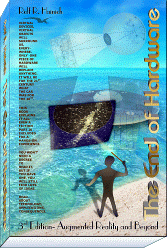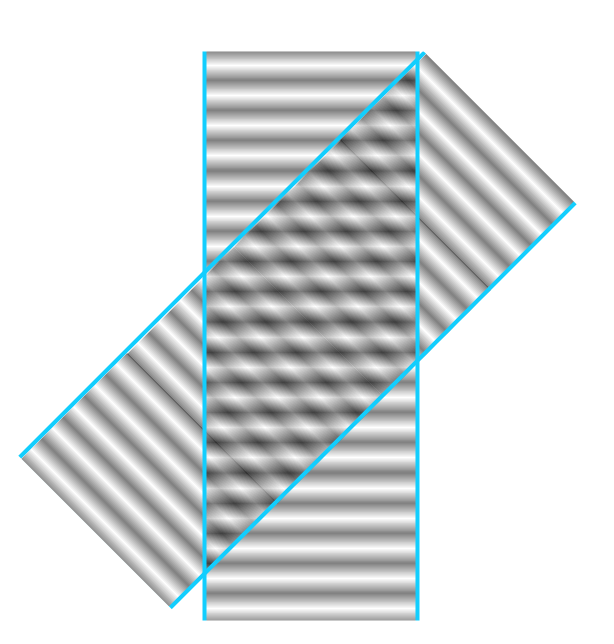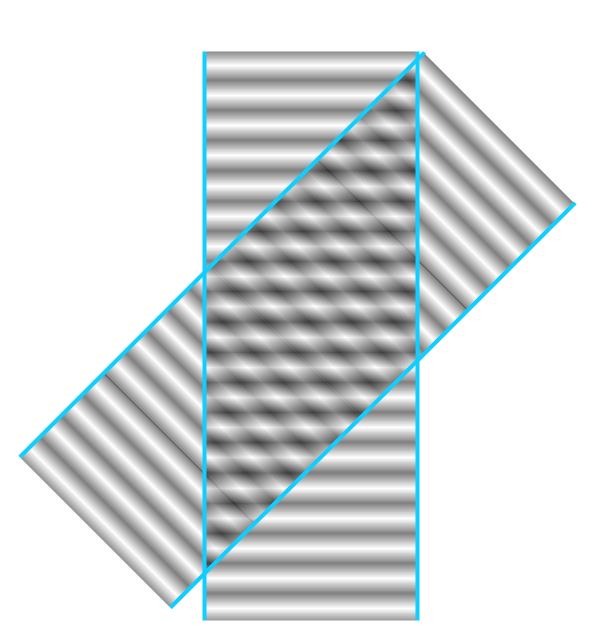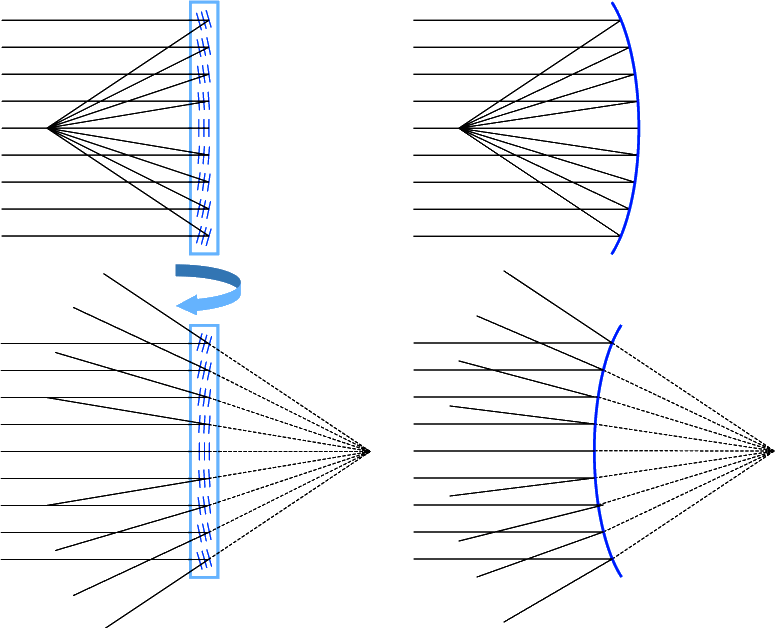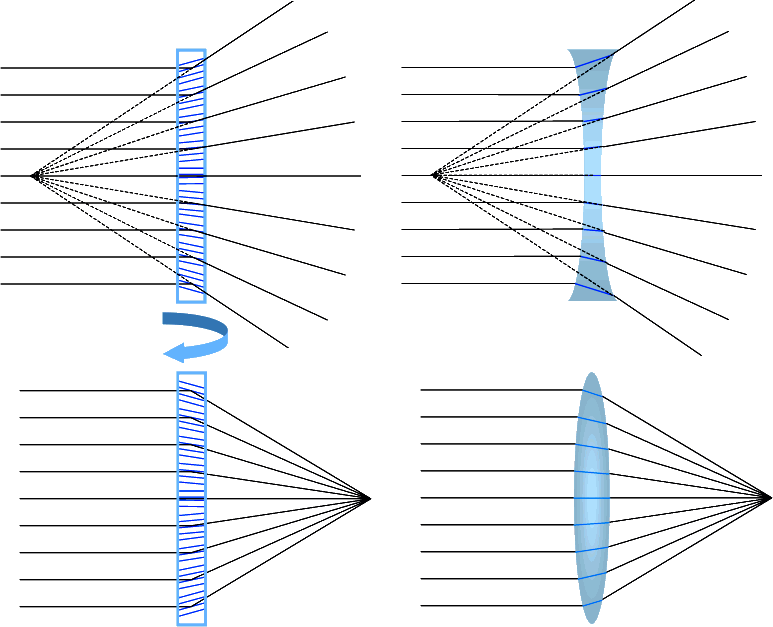Augmented Reality is more than Virtual Reality
Holographic Optical Elements (HOE's)
Headup displays with holographic combiners have been used in fighter jets since more than 20 years. Basically they can be described as a mirror that only reflects light of a certain wavelength, coming from a certain source (a display) and otherwise is almost 100% transparent.
The mirror is a concave one, creating a virtual picture of the display at infinity. Hence, it stays in place against the horizon no matter where the pilot moves his head.
To understand how this works we first have a look on how light interference really makes a hologram. Other than one could think, the pattern resulting is different for convergent and for opposite beams. The animation shows that intensity maxima are traveling, ruled by beam directions. Light interference is not static !
If we place a photo sensitive layer within the interference area. traveling light maxima (positive and negative ones, of course) are changing the material. In between, just zero transitions occur and nothing gets changed. The result are stacked layers, or planes, of different exposure. The drawing also shows an ultra simple approach how to derive the related Bragg Diffraction formulas.
If our photo-sensitive material reacts to the exposure by changing its refraction index (simple B/W film bleached after development, or some gelatin materials do), light will later on be reflected at these layers. We must understand that at any change of refraction index, some part of light is always reflected, more or less, but in any case, with any angle or index change whatsoever.
If the layers have distances corresponding to the wavelength and angle of the infalling light, these reflections, though weak, may add up to almost 100%, more than we could get even from a silver mirror !
As usual with holography, when we use the resulting hologram, a beam similar to one of the original ones will reconstruct the other.
The mirror of a holographic combiner can therefore simply be constructed with a parallel beam (like one from infinity) and a concentric one (like from a display pixel). Usually, a special gelatin layer between two glass plates forms the hologram film. Other than one would expect, these constructions have proven very rugged and endurable.
The holographic mirror resulting, will convert light from a display pixel into a beam from infinity. There is a range of angles for which this will work of course, not just a single one, otherwise this wouldn't work to depict the entire display. This range depends on the thickness of the hologram (the number of layers). In detail, the working principle of a holographic mirror can easily be visualized as follows:
Notably, HOE's do not always behave like their conventional counterparts: if we flip the hologram, a convex mirror becomes a concave one !
With the right setup, we can also produce lenses. Again, flipping these will revert their function.
From a lecture held in Sept. 2007
A new type of Augmented Reality display One major advantage of HOE's is their many degrees of freedom. Almost any beam conversion can be 'programmed' by just generating the right constructing beams. HOE's can also show extreme behavior especially at flat reflection angles. A new near-eye display by Lumus Inc. (picture) has a holographic film between glass plates (as usual with HOE's), having about identical refraction indices. Hence, very flat light beams can transgress the borders between glass and hologram almost unaffected, while at places where the film is modulated, they get reflected outside (or into) the plate. The freedom of construction allows to design the HOE for almost any input or output beam shapes desired.
It's obvious that as stated in the book already, HOE's are a very important technology with Augmented Reality. They are rugged, will with some refinement effort be easy to produce, and are good for some more surprising constructions.
home more notes order
Copyright © 2006-2011 Rolf R. Hainich; all materials on this website are copyrighted.
Disclaimer: All proprietary names and product names mentioned are trademarks or registered trademarks of their respective owners. We do not imply that any of the technologies or ideas described or mentioned herein are free of patent or other rights of ourselves or others. We do also not take any responsibility or guarantee for the correctness or legal status of any information in this book or this website or any documents or links mentioned herein and do not encourage or recommend any use of it. You may use the information presented herein at your own risk and responsibility only. To the best of our knowledge and belief no trademark or copyright infringement exists in these materials. In the fiction part of the book, the sketches, and anything printed in special typefaces, names, companies, cities, and countries are used fictitiously for the purpose of illustrating examples, and any resemblance to actual persons, living or dead, organizations, business establishments, events, or locales is entirely coincidental. If you have any questions or objections, please contact us immediately. "We" in all above terms comprises the publisher as well as the author. If you intend to use any of the ideas mentioned in the book or this website, please do your own research and patent research and contact the author.
